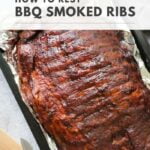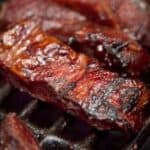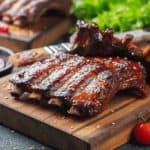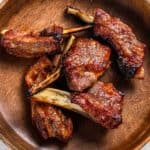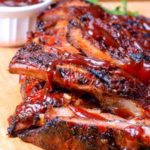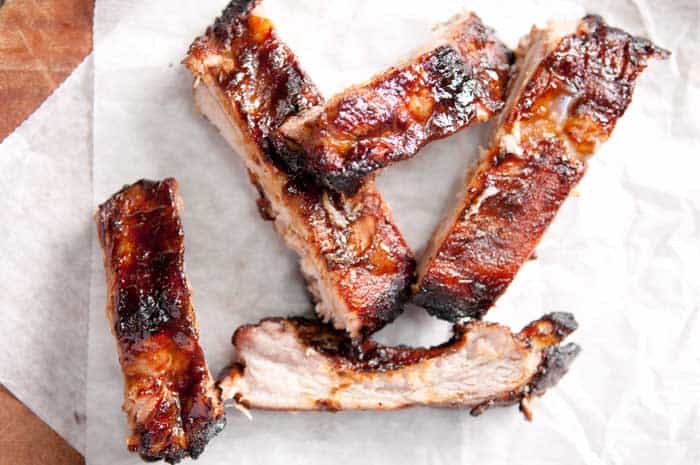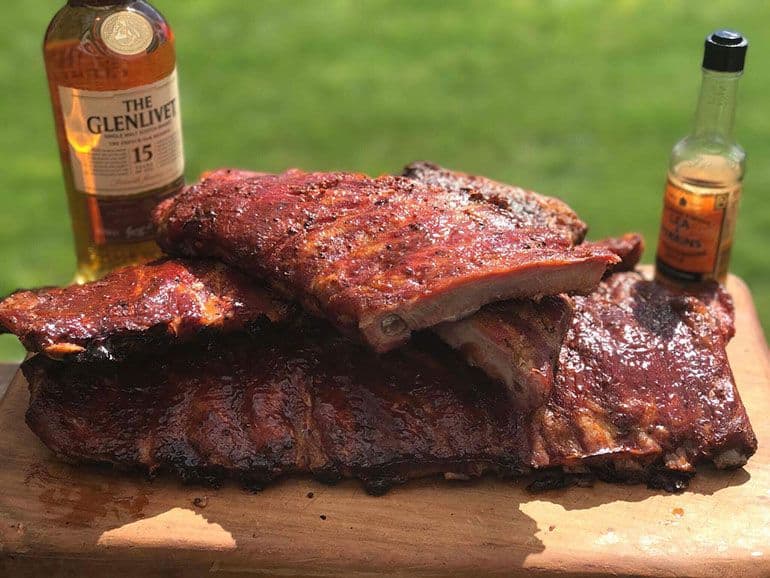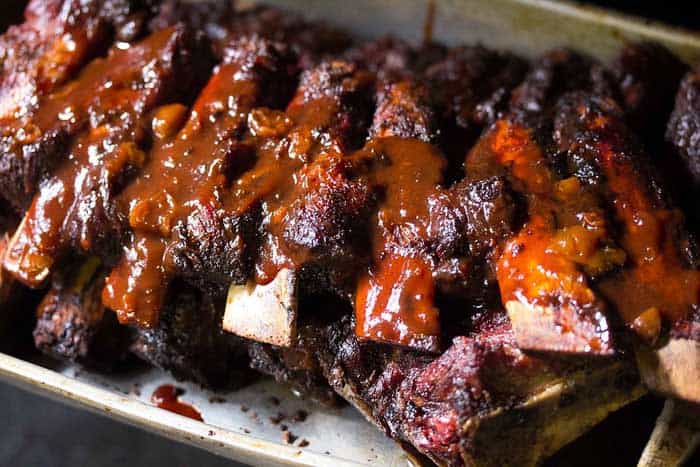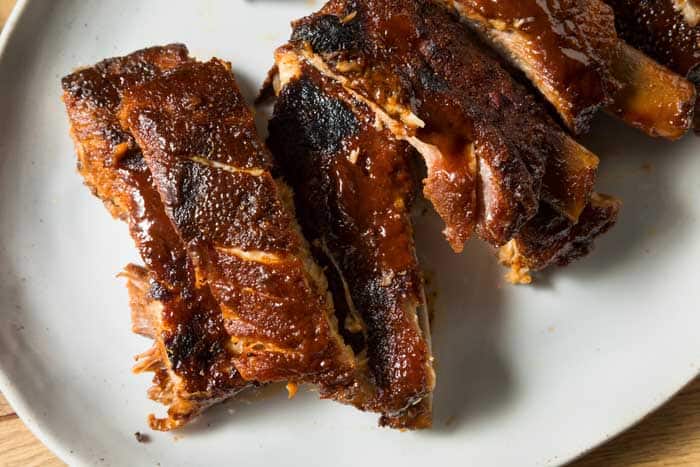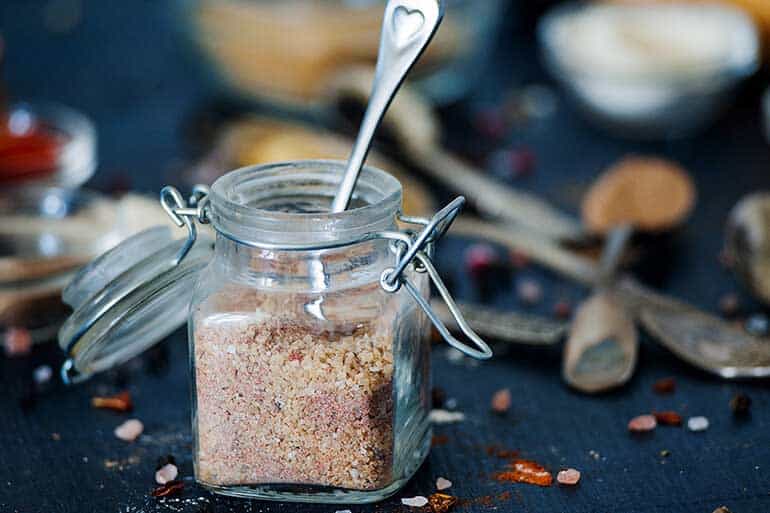Good meat resting is the best way to guarantee the tender-but-firm barbecue smoked ribs we all love. From foil wrapping to nailing resting time, discover how to rest BBQ ribs today.
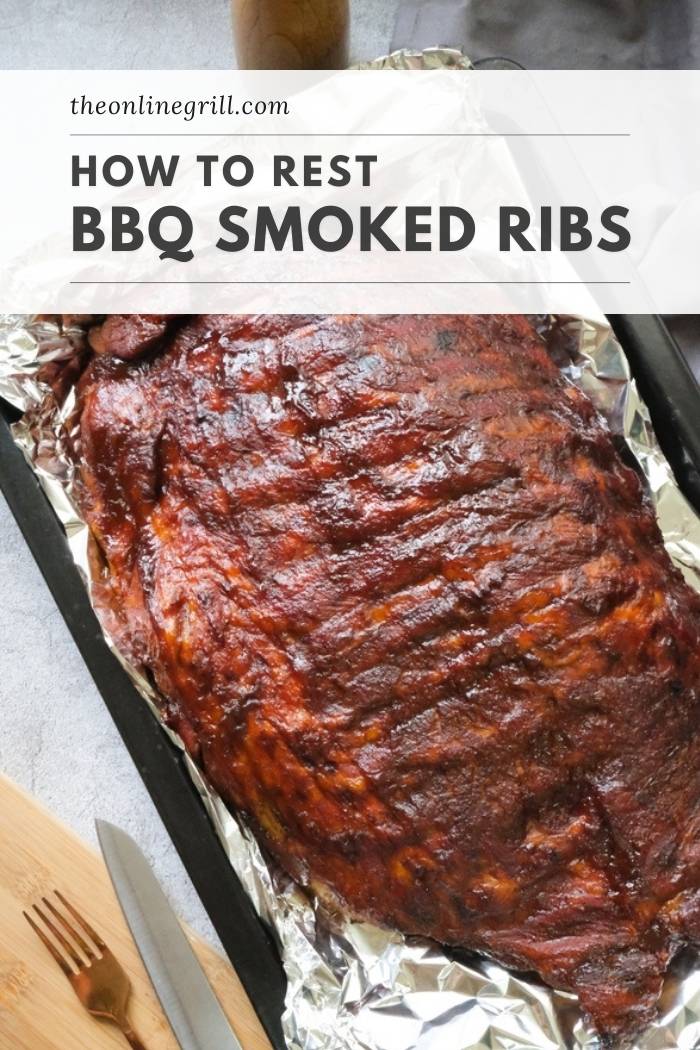
Smokey, savory, and delicious, there are few things tastier than BBQ smoked ribs. Ribs are one of the most popular starting points for barbecue enthusiasts and smoking newcomers, and one of the most important things to learn is why and how long to rest ribs.
Today we’re going to help you demystify the resting process. We’ll also share some sound advice on meat resting so you can delight your guests the next time you fire up the smoker. Whether you prefer a rack of baby back ribs or St Louis spares, this is how to rest ribs for that perfect finish.
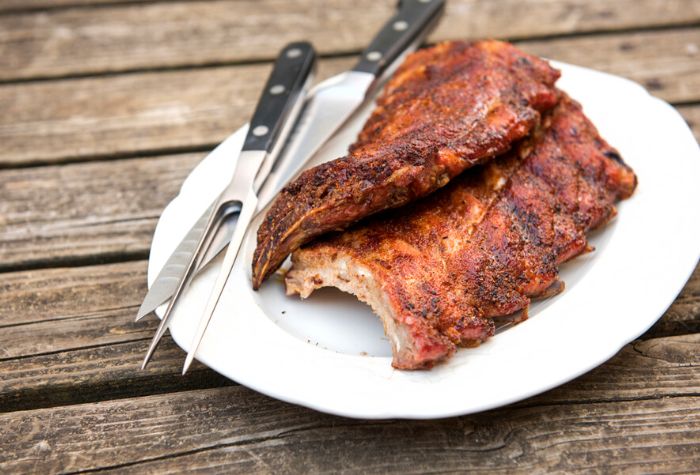
Why You Should Rest Smoked Ribs
The science of allowing the meat to rest is simple: The proteins within the meat uncoil during the cooking process, then coagulate and recoil. This causes the proteins within to become firm, pushing out the moisture inside their cell walls.
To preserve that moisture and lock it inside the meat, you’ll want to allow it to rest. When resting meat all the juices trying to work their way out of it can be reabsorbed. Instead of losing these flavorful juices to the cutting board, they are locked back into the meat, delivering a juicy piece of meat that’s loaded with flavor.
Resting is especially important with larger meats, such as a large brisket, pork butt, or turkey. Some BBQ chefs argue that resting ribs is far less critical than it is with larger proteins. Still, resting your ribs will only take a few minutes, and it can only improve the juiciness and flavor of your cook, so it’s a best practice worth sticking to.
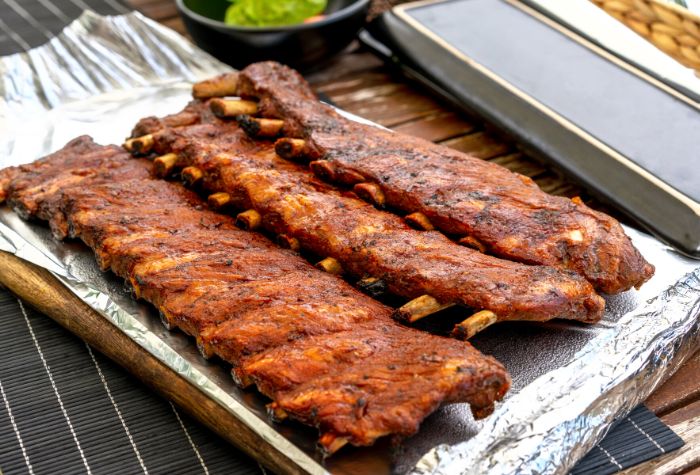
How to Rest Smoked Ribs
There are several methods you can use for resting ribs, or any other BBQ meat, for that matter. Below, we’ll cover the three most popular methods.
Aluminum Foil
Resting the meat in aluminum foil is a tried-and-true method that most BBQ chefs agree is the easiest and most effective way to rest. Here’s how to rest ribs in foil:
- Place a sheet of aluminum foil onto a chopping board or countertop.
- Remove the ribs from the smoker or grill, and place them on the foil.
- Place a second sheet of aluminum foil loosely over the ribs, and tuck the foil under the ends of the ribs.
- Allow the ribs to rest for at least 10 minutes.
You’ll want to avoid wrapping your ribs tightly in aluminum foil, as this won’t allow ambient heat to escape, creating two problems.
First, the trapped heat will continue to cook your ribs, likely leading to overcooking. Plus, the trapped heat and moisture will soften the crispy bark on the rib’s exterior that you’ve worked so hard to create.
Faux Cambro (Cooler)
One of the challenges of producing quality BBQ is being able to offer your guests a hot and juicy plate when they’re ready to eat. If your meat comes off the smoker too early, it’ll be cold and dry by the time your guests get to it. Conversely, if you wait too long, you risk hungry guests waiting before they can enjoy what you’ve made.
A cambro, an insulated box that keeps foods hot, is an indispensable tool for keeping your barbecued meats hot and ready for when your guests are hungry. Unfortunately, they’re expensive, and most home chefs aren’t interested in shelling out the money for one.
Thankfully, you can make a faux cambro yourself, using things that almost every household has on hand. Here’s how to create a faux cambro and use it to rest your ribs and keep them hot and juicy for your guests.
- Fill an empty cooler with 3 gallons of near-boiling water and close the lid
- Dump the water from the cooler and place a clean towel in the bottom
- Take your ribs from the smoker and put them into an aluminum tray
- Loosely wrap the ribs in foil
- Place the tray with the ribs into your faux cambro, and close the lid
This will allow your ribs to rest and ensure they spend more time in that hot and juicy sweet spot, so you and your guests don’t have to worry about enjoying them the second they finish resting.
Oven
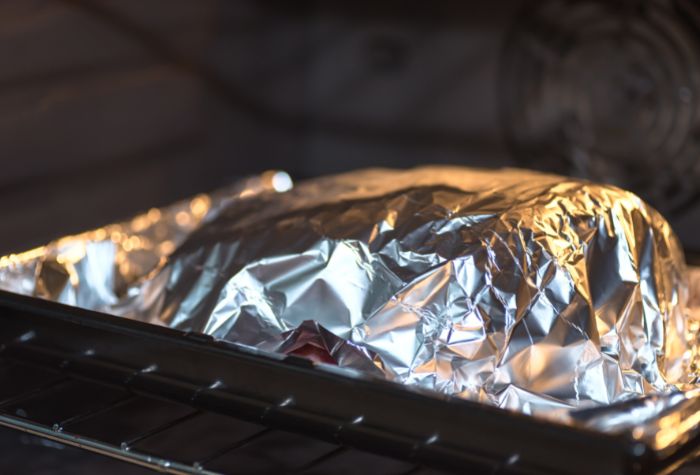
The third option for allowing your ribs to rest is to place them in a warm oven.
As your ribs are nearing the end of their cook time, preheat your oven to 200°F (95°C). Once your range reaches temperature, shut it off. Once your ribs are finished cooking, remove them from the smoker and place them onto a foil-wrapped baking sheet. Put the ribs into the warm oven, and allow them to rest for 15-20 minutes.
How Long to Let Ribs Rest
Now that you know how to rest smoked ribs, the next question is how long you should rest them. The time you allow your ribs to rest is mostly a matter of preference. Some argue that ribs must rest for 20 minutes or longer, while others say that the entire process is unnecessary.
Generally, you’ll want to let your ribs rest for at least 10 minutes after cooking. Experiment with different hold times as you get more cooks under your belt, and you should be able to find a sweet spot for how long you like to rest ribs or other barbecued meats.
Should I Cover Ribs When Resting?
Depending on how you rest your ribs, covering them may or may not be necessary. If you’re resting your ribs in a warm oven, there’s no need to cover them. With other methods, where the ribs are exposed to room temperature, covering helps reduce heat loss.
How Do You Know When Smoked Ribs Are Done?
The easiest and most accurate way to test the doneness of your ribs is to insert a thermometer between the two ribs in the center of the rack. Once the ribs have reached a temperature reading of 195°F (91°C), they’re ready to come off the smoker and begin the resting process.
You can approximate doneness with a toothpick if you don’t have a thermometer. Place a toothpick between the two ribs in the center of the rack. If you can freely move the toothpick in and out, your ribs are done. If you meet any resistance with the toothpick, they still need more time.
If you don’t have a toothpick, give your ribs the bend test. Pick up the rack of ribs from one end. If you can easily bend the ribs back so the meat in the middle of the rack begins to tear, your ribs are done.
